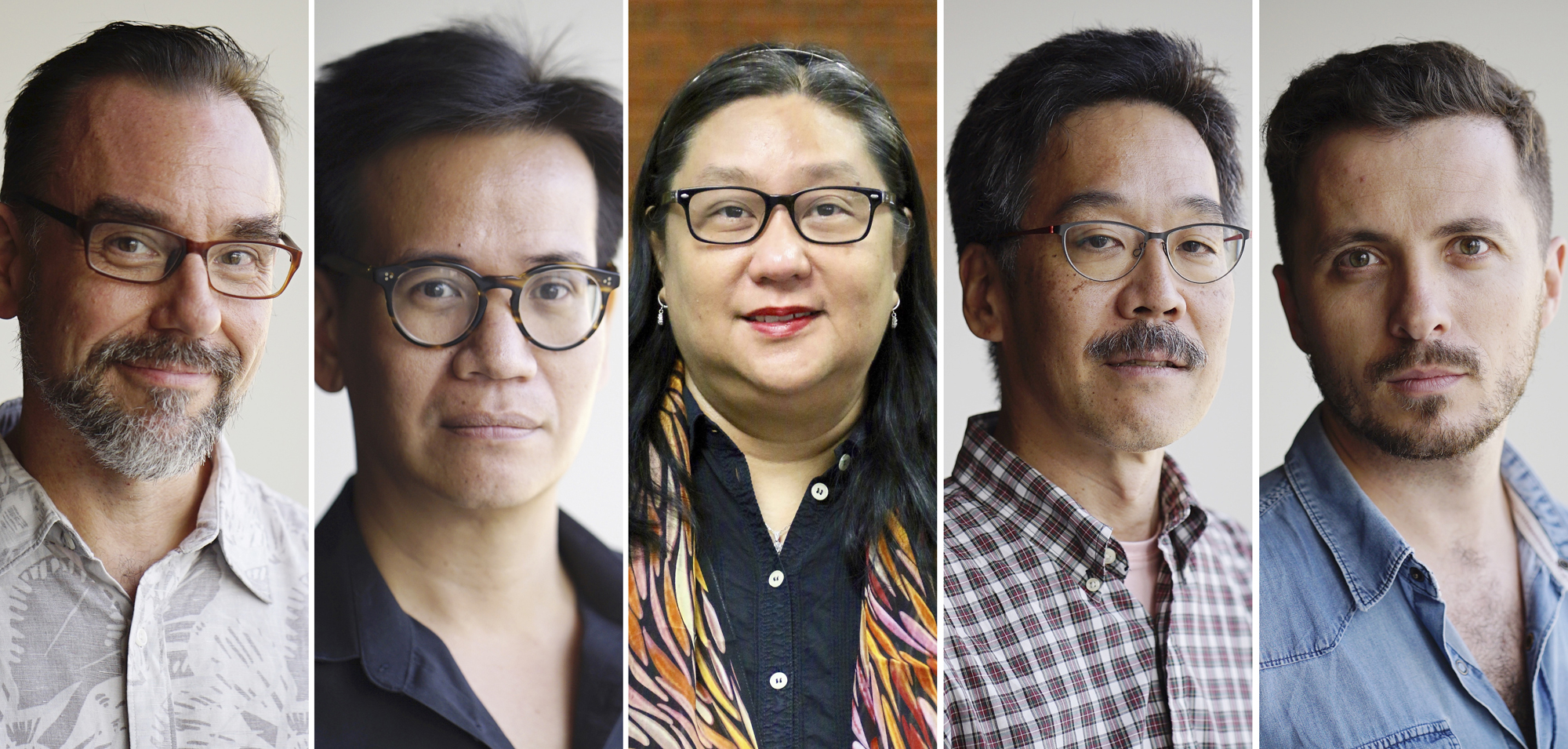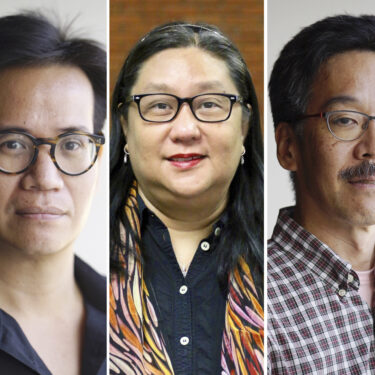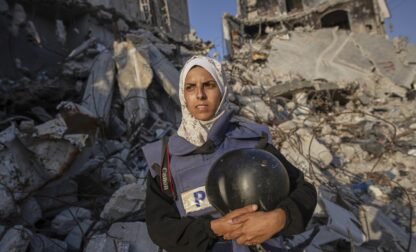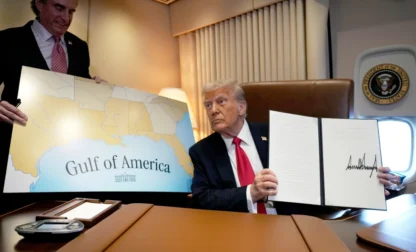BANGKOK (AP) — The Associated Press has named five of its journalists to its cross-format leadership team in the Asia-Pacific region, where the news organization is merging its text, photo and video operations to maximize coordination and speed.

At the AP’s Asia-Pacific hub in Bangkok, Leon Drouin-Keith, the region’s enterprise editor, becomes deputy director for newsgathering; Celine Rosario, who had been video editor, is now director of planning; and Charles Dharapak moves from regional photo editor to deputy director for production and presentation. Japan Chief of Bureau Ken Moritsugu is now news director for Japan and the Koreas. And Bernat Armangue, the New Delhi photo editor, has been named South Asia news director, a position he had held in an interim capacity.
“This is a dynamic group of experienced Asia hands who all know how to tell the story of the region in the accurate, compelling and innovative ways that news consumers and AP customers need and expect,” said Ted Anthony, Asia-Pacific news director. “It’s hard to imagine a better team.”
The AP reorganized its leadership structure to help it cover the news as effectively and efficiently as possible across formats.
“The new structure will help us deliver news more quickly, be more responsive to customer needs and, above all, help us pivot toward the digital and social-media-savvy audiences that consume most news today,” Anthony said.
Dharapak, the Asia-Pacific region’s photo editor since 2014, will as production deputy ensure that the AP not only produces strong and comprehensive content in all formats, but also employs new methods of storytelling. From 2003 to 2014, he was based in Washington, where he covered national politics, three presidential campaigns and two presidents. He took a visible role in advocating greater press access and has received numerous awards for his political coverage, including the White House News Photographers Association’s photographer of the year in 2012.
Dharapak, 45, joined the AP in 1995 as a staff photographer based in Southeast Asia and later became AP’s chief photographer and photo editor in Jakarta, Indonesia. He covered major events including the Cambodian civil war, the democracy movement in Myanmar, and the protests and riots that led to the fall of Indonesian leader Suharto. In 2002, Dharapak spent considerable time photographing the Israeli-Palestinian conflict, work that was recognized by the Associated Press Managing Editors. He grew up in the New York City borough of Staten Island, received degrees in print journalism and economics at New York University. He is fluent in Thai and speaks Bahasa Indonesia.
As newsgathering deputy, Drouin-Keith, 47, will drive the Asia-Pacific news report, with an emphasis on strong video coverage and breaking news. He joined the AP’s Los Angeles bureau in 2000, after working for the Arizona Daily Sun in Flagstaff and the Arizona Daily Star in Tucson. He later edited for nearly a decade in AP’s New York headquarters, including on its Top Stories Desk, before moving to the Asia-Pacific Desk in 2011. He became enterprise editor in 2013 and for more than a year has been acting regional text editor.
A graduate of the University of Arizona, Drouin-Keith has edited several award-winning projects over his career. In 2015, he worked with editors and reporters on the AP’s Pulitzer Prize-winning Seafood From Slaves project to help develop and edit the stories from their earliest phases.
As planning director, Rosario will use her experience planning Asia-Pacific video operations to improve planning in text and photos, and will be the main go-to person for budgeting and spending. She joined the AP as senior producer in Manila when its video service was launched in 1994, and oversaw one of its first wins as a video agency, delivering first and exclusive material of the aftermath of a major Philippine earthquake. She was named regional video editor in 2006 and has overseen video coverage of many major stories, including the 2008 Mumbai attacks, the 2011 Japan earthquake and tsunami and the aftermath of the 2013 super typhoon Haiyan in the Philippines.
Rosario graduated with a mass communications degree from Manila’s De La Salle University, and prior to joining AP, she was senior producer for Reuters Television in Manila.
Moritsugu, appointed Tokyo bureau chief in 2013, now is responsible for coverage in all formats out of Japan and the Koreas. He has been a leader in AP’s efforts in Asia to reshape coverage for the digital age. During his tenure, the Tokyo bureau has used innovative approaches to tell stories in visually compelling ways, from Japan’s post-tsunami and nuclear struggles to U.S. President Barack Obama’s historic visit to Hiroshima.
Moritsugu, 54, started his journalism career at The Japan Times in Tokyo. He later was a reporter for the St. Petersburg Times, Newsday and the Knight-Ridder Washington bureau. He joined The Associated Press in 2007 as Asia enterprise editor in Bangkok, overseeing major projects including “China’s Reach,” an award-winning, data-driven series. He has held several leadership posts with the Asian American Journalists Association, including a stint as Asia chapter president.
Armangue has overseen AP’s coverage in India, Sri Lanka, Nepal, Bangladesh, Bhutan and the Maldives as acting South Asia news director for the past 15 months, and now takes the job permanently.
He began working for AP as a stringer in Barcelona, his native city. From 2005 to 2008 he was based in Madrid, and from 2008 to 2013 he covered Israel, the West Bank and Gaza. He joined the New Delhi bureau as South Asia chief photographer in 2014.
Armangue, 38, has covered events including the Nepal earthquake in 2015, Nelson Mandela’s funeral in 2013, the Libya war in 2011, the Arab Spring in Cairo in 2011-2012 and the Gaza war in 2012. He also has covered sport extensively, including two Olympics, World Cup soccer, Americas Cup sailing and Formula One racing. He has won many awards in the process, including Pictures of the Year International, NPPA’s Best of Photojournalism, World Press Photo, Picture of the Year in the China International Press Photo Contest and the Overseas Press Club’s John Faber Award.




